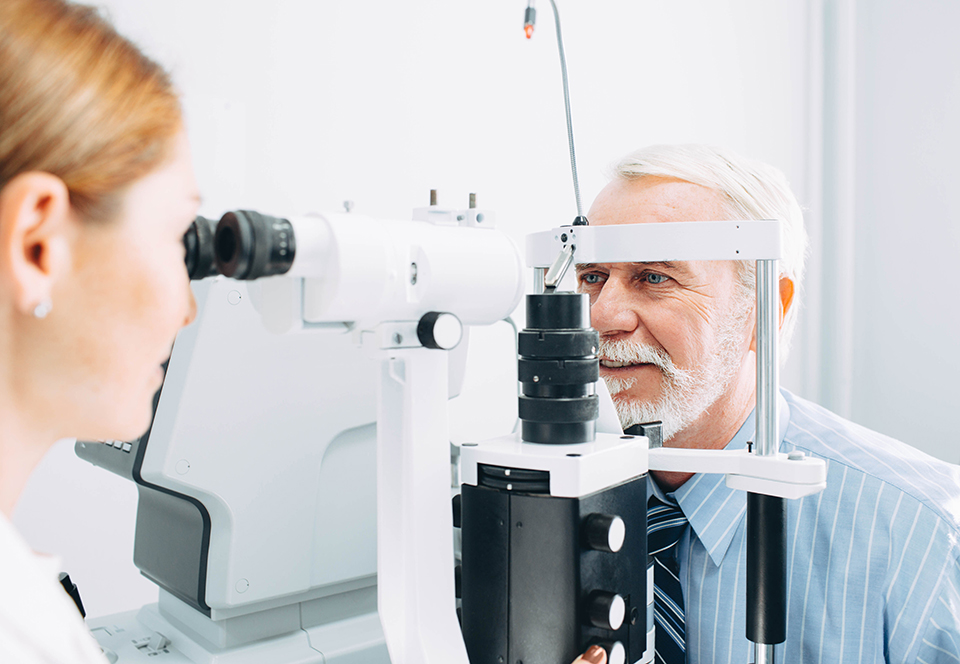By age 65, most older adults have become well acquainted with reading glasses, as nearsightedness begins to fade in our 40s and can continue as we get older.
Other changes, such as increased dryness and more frequent eye “floaters” or spots in your vision are a perfectly normal part of aging, but it is a misconception that getting old leads to an inevitable reduction in sight.
“Don’t assume that just because you’re aging, you have to lose your vision,” says Kerry Beebe, who spent 42 years as an optometrist in Brainerd, Minnesota.
Most important to maintaining your vision are annual eye exams and proactively addressing any concerns you might have, Beebe says. Staying ahead of small issues will help you avoid more serious eye diseases common in older adults. Beebe o ffered his expertise on four of those conditions:
CATARACTS
A cataract is a cloudiness or opacity in the eye’s lens. The risk of developing a cataract increases with each decade beyond age 40, with half of white Americans developing one by age 75, compared with more than 40 percent of other ethnic groups, according to the National Eye Institute.
Symptoms can include blurred vision and increased glare. Some cataracts develop in less than a year, others can occur gradually over several years, Beebe says.
Some studies have shown a link between cataracts and ultraviolet exposure, so wearing sunglasses and avoiding prolonged time in the sun might help prevent them, Beebe says. Cataracts are corrected through surgery that involves removing the damaged lens and replacing it with an artificial one. Surgery is common and the outcomes are generally successful.
GLAUCOMA
Glaucoma is a disease of the optic nerve, caused by pressure on the eye, that can lead to blindness. Black Americans over 40 are at a higher risk than other groups; nearly 6 percent of Black Americans have glaucoma by age 69, according to the National Eye Institute.
The disease in its early stages produces no symptoms. Later-stage symptoms can include patchy blind spots, tunnel vision, severe headaches, eye pain, nausea, blurred vision, redness and halos around lights. Once vision is lost from the disease, it cannot be restored, which means early detection is crucial.
“The annual eye exam is really important with glaucoma,” Beebe says, noting that genetic factors play a large role, so knowing family history is helpful. Treatment methods include eyedrops, laser treatment or surgery and, when caught and treated early, patients can expect continued good vision for a lifetime.
MACULAR DEGENERATION
As the name implies, this disease involves the degeneration of the macula, which is the central part of the retina that allows you to see small detail.
Older white adults are at higher risk, with 14 percent of white Americans age 80 and older affected by the disease, according to the National Eye Institute. Other risk factors include smoking, obesity, cardiovascular disease and genetics.
The disease produces no symptoms early on. Visual distortions, worsening central vision, blurriness of printed words, and difficulty adapting to low light are some of the symptoms in later stages.
Macular degeneration begins in a “dry” form but can progress to “wet” when blood vessels grow under the retina and leak. The ability to diagnose the disease early has improved in recent years, Beebe says, with doctors able to find and treat it before vision is impaired. Care includes vitamin supplements and in later stages, eye injections.
DIABETIC RETINOPATHY
Diabetic Retinopathy is a complication from diabetes that causes damage to blood vessels in the back of the eye, which can lead to vision loss and blindness. It is the most common diabetic eye disease and the leading cause of blindness in American adults, according to the National Eye Institute.
The longer an individual has had diabetes, the more at risk they are for diabetic retinopathy. Management of diabetes through proper diet, exercise and controlling blood sugar levels is the best way to prevent retinopathy, Beebe says. There are two kinds of retinopathy, he says: proliferative, which involves new blood vessels growing on the retina that are fragile and could hemorrhage, and diabetic macular edema, in which blood vessels leak fluid into the macular area.
Treatment for both can involve laser procedures and injections, and outcomes are good when addressed early.


